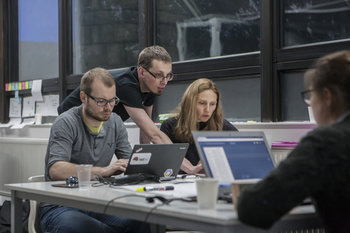|
| |
Job processing is data processing that is non-interactive with a start and an end. This differs from interactive applications that are used by people. It also differs from systems, services and servers that are up all the time as opposed to running and terminating. The following are illustrative examples of job processing.
Operating SystemsAn operating system schedules a monthly job to clean up some files.A billing team runs a monthly job to generate customer invoices.ScienceA researcher manually runs a process to analyze a data set.A video sharing site runs a process to convert several million videos to a new format. The job is run as a low priority background process that uses computing resources when they are available.
ReportingA job performs an analysis and generates a weekly report. It is executed by a scheduler late at night when its required resources are under a light load.BackupsA job on a server compresses, encrypts and transfers files each evening to a backup server.A social media platform runs an algorithm once a day to calculate a score for the quality of accounts.NotesJob processes are often batch processes such that the two terms are used interchangeably. The main difference is that a batch process iterates over a set of data whereas a job process might not. This distinction is old and seldom applied now.|
Type | | Definition | Data processing with a start and end that is non-interactive. | Related Concepts | |
Computing
This is the complete list of articles we have written about computing.
If you enjoyed this page, please consider bookmarking Simplicable.
Examples of computing in everyday life.
Examples of system architecture diagrams.
The definition of cloud-scale with examples.
The definition of vertical scale with an example and comparison to horizontal scale.
A list of common types of network infrastructure.
A complete guide to root access.
An overview of null with examples.
The common types of modern computer.
A list of unusually useful linux commands with brief explanations.
A list of low-level programming terms.
The difference between a cache and a buffer.
The basic types of interfaces.
TrendingThe most popular articles on Simplicable in the past day.
Recent posts or updates on Simplicable.
Site Map
© 2010-2023 Simplicable. All Rights Reserved. Reproduction of materials found on this site, in any form, without explicit permission is prohibited.
View credits & copyrights or citation information for this page.
|























